Let’s get straight to it. You’re here because you love Victorian décor (welcome!).
Now, your kitchen feels too much like the 2020s. Maybe you dream of clawfoot tubs, brass fixtures, and a moody color palette that says, yes, I bake pies from scratch.
Before you paint your walls like you’re in Downton Abbey, let’s explore what colors work in a Victorian kitchen.
We’ll find ways to achieve this look without making it feel like a haunted house. Been there. It’s not fun. 😅
Victorian Kitchens: A Vibe Check First
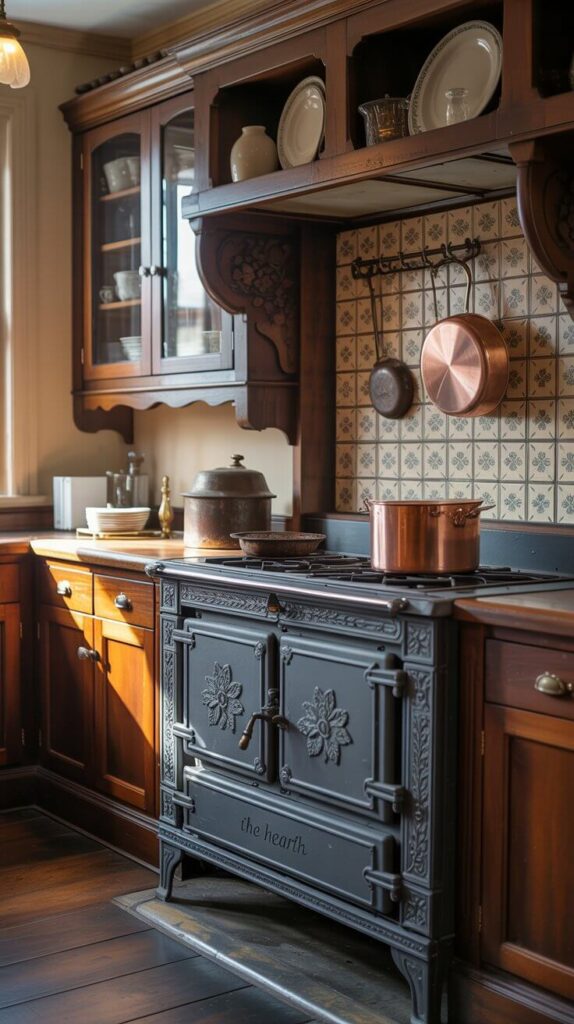
Let’s get on the same page here. The Victorian era wasn’t about modern minimalism or all-white cabinets.
These kitchens were full of character, vibrant colors, ornate details, and a touch of drama.
But here’s the kicker: not every Victorian kitchen looked the same.
Fancy upper-class homes featured more decorative elements and richer colors. In contrast, working-class kitchens were simpler but still had their own charm.
So what’s the takeaway? Victorian kitchens were intentional. The colors served a purpose, adding warmth, history, and yes, a bit of flair.
1. Rich, Earthy Tones: The Victorian Staples
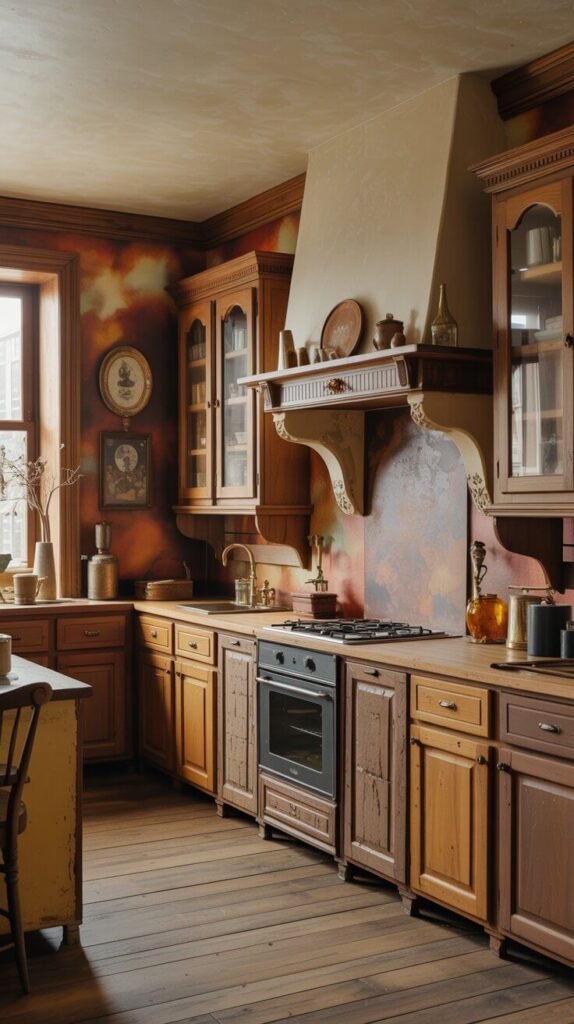
Browns, Beiges, and All That Warm Stuff
When you think Victorian, think cozy. Browns and beiges ruled the scene, especially in kitchens where natural wood and stone played a huge part.
Popular shades included:
- Walnut brown
- Mushroom beige
- Burnt sienna
- Tobacco or caramel hues
These colors created a grounded, homey vibe. Ever seen those old English country kitchens? That’s the energy.
FYI: If you’ve got wood cabinets or plan to get them, lean into the grain! Don’t fight it with trendy grays. Embrace the richness.
2. Deep, Moody Colors: The Show-Stoppers
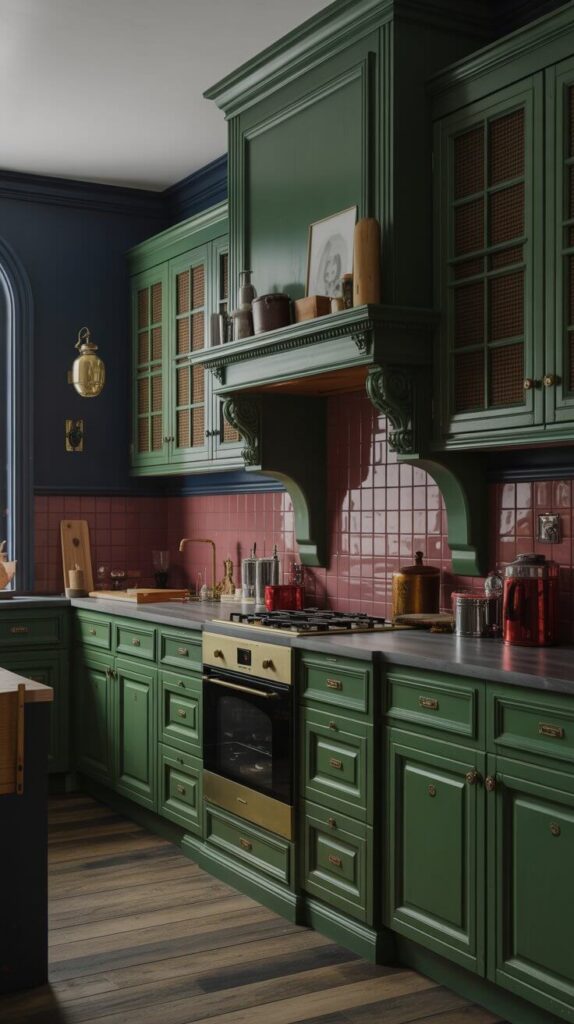
When in Doubt, Go Dark and Dramatic
Victorians loved a good moody moment. Kitchens often featured deep greens, navy blues, and burgundy reds that added depth and sophistication—without trying too hard.
Classic Victorian mood tones:
- Forest green
- Navy blue
- Oxblood red
- Charcoal gray
These weren’t just “trendy” colors—they were used because of their durability and the cozy atmosphere they created.
And let’s be real: nothing screams elegant chaos like a navy pantry with brass knobs.
Pro tip: Pair these bold colors with lighter elements like cream tile or marble countertops to avoid the “dungeon kitchen” effect. Learned that the hard way.
3. Soft and Muted Pastels: The Underdogs
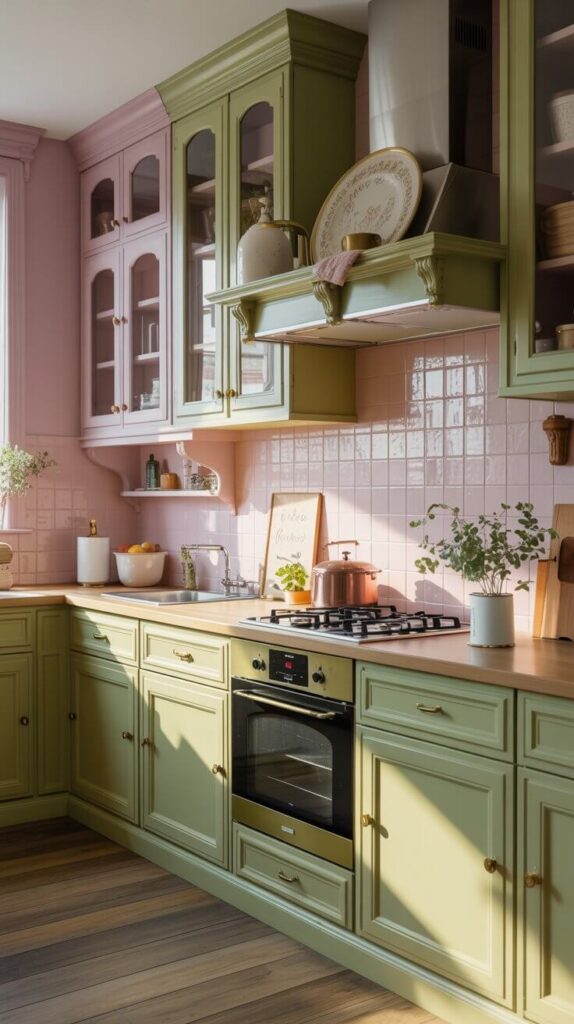
Not All Victorian Is Dark and Brooding
Surprise! It wasn’t all gloom and mahogany.
Victorian kitchens—especially in upper-middle-class homes—also featured soft pastel hues that added a touch of femininity and lightness.
Pastel favorites:
- Sage green
- Dusty rose
- Muted lavender
- Buttercream yellow
These colors worked beautifully with white ceramic accents, vintage tiles, and natural light. They weren’t cutesy—they were classy cute. Think Jane Austen with an apron.
IMO, sage green cabinets with brass hardware? Chef’s kiss.
4. The Role of White (But Not That Kind of White)
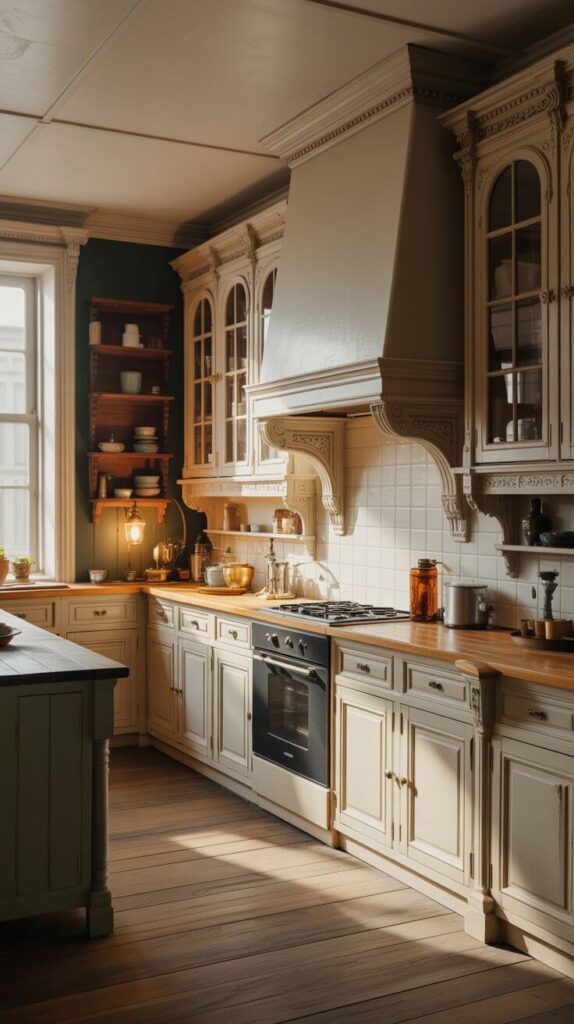
Spoiler: Victorian White Isn’t IKEA White
Yes, white was part of the Victorian palette, but don’t confuse it with today’s bright, sterile shades.
Victorian whites had warm undertones—think ivory, cream, or even a soft parchment color.
Common white variants:
- Ivory
- Antique white
- Cream
- Alabaster
These tones helped balance out darker walls and cabinetry, especially in smaller kitchens. So if you’re going white, make it warm and vintage. None of that hospital chic, okay?
Bonus tip: Use white for your upper cabinets or backsplash to add some airiness. It gives your kitchen breathing room—literally and visually.
Bold Accents & Decorative Touches
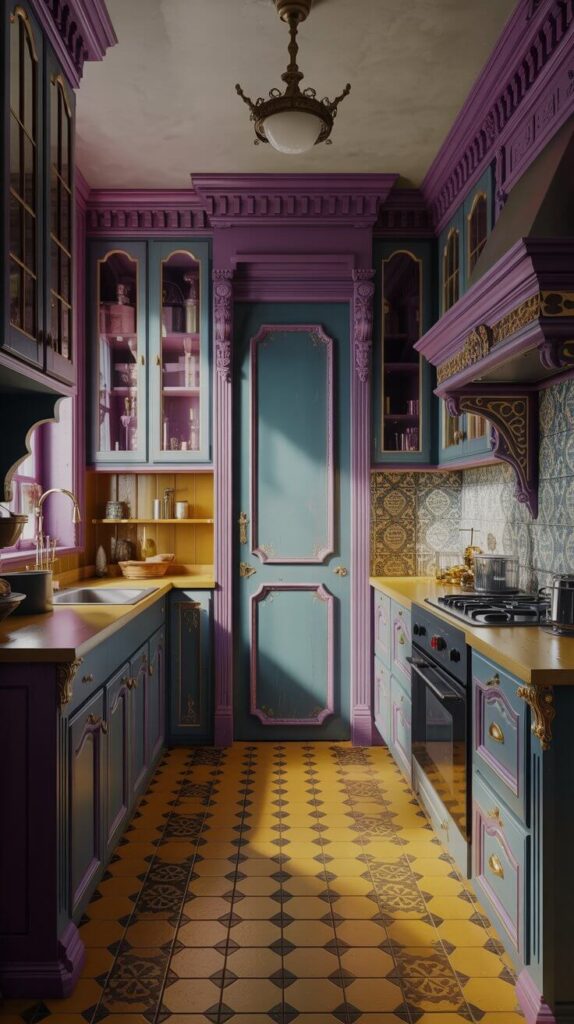
Where the Fun (and a Little Sass) Comes In
Let’s be honest—Victorian kitchens had a flair for the dramatic.
Accent colors weren’t just allowed; they were encouraged. Think deep plum trim, teal cabinet interiors, or goldenrod-patterned floor tiles.
Accent colors that slayed (and still do):
- Plum or aubergine
- Teal or peacock blue
- Mustard yellow
- Verdigris (that fancy green-blue of oxidized copper)
Use these sparingly for max impact. Maybe the inside of your cabinets? Or the island? Or even just a painted pantry door. You get the idea. 🎨
Pairing Paint with Materials
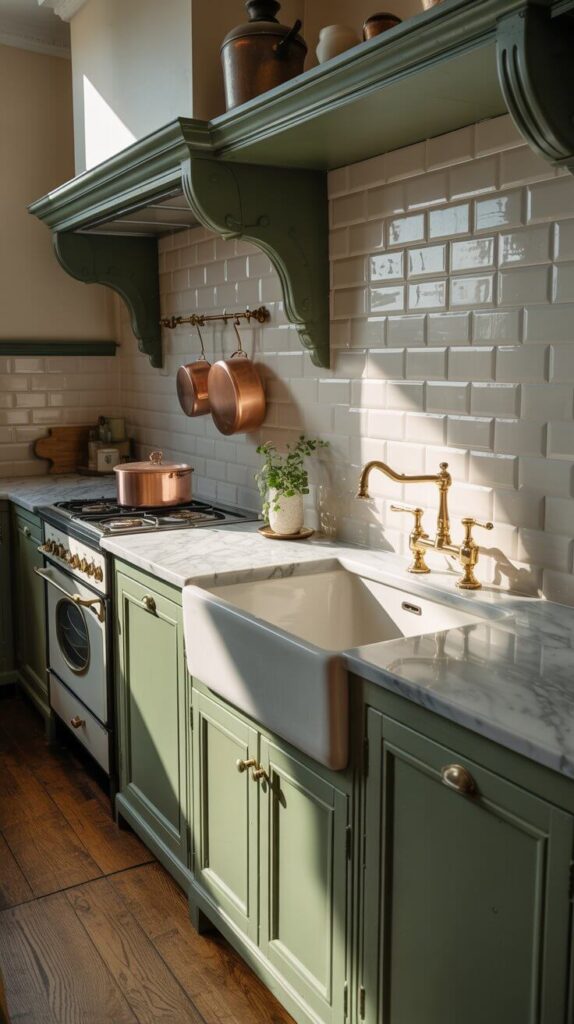
Because Color Alone Isn’t the Whole Story
Colors need context. And in a Victorian kitchen, materials play a huge role. The way your color sits next to tile, wood, or stone changes everything.
Here’s what plays nice with Victorian colors:
- Natural wood (oak, walnut, cherry)
- Stone or marble counters
- Butler sinks (aka farmhouse sinks)
- Copper or brass fixtures
Match dark walls with white tile and brass taps for that wow factor.
Or go muted pastel and pair it with soapstone counters and matte black hardware. You do you—but make it Victorian-approved.
How to Choose Your Victorian Color Palette
Because Copy-Paste Doesn’t Always Work
Not every shade will work in every kitchen. So how do you pick your perfect Victorian palette?
Here’s a simple method that’s worked for me:
- Pick your “anchor” color – This is your main wall or cabinet color (like forest green or mushroom beige).
- Choose a complementary tone – Use this for your secondary elements like trim, island, or shelves.
- Add an accent color – Something bold for small pops—drawer interiors, pantry walls, etc.
- Balance it with neutrals – Use antique whites or wood tones to soften everything.
Need inspiration? Pinterest is your best friend. But warning: it can suck you in for hours. Don’t say I didn’t warn you. 😬
Common Mistakes to Avoid (Been There, Done That)
Let’s Save You Some Regret
We all make mistakes… but you don’t have to. Here are some classic Victorian kitchen color faux pas I’ve seen (or made—oops).
- Going too modern – Cool grays and sleek finishes clash hard with Victorian warmth.
- Overusing dark tones – You want drama, not darkness. Unless you like cooking in a cave?
- Skipping the hardware match – Nickel handles with warm-toned paint? No thanks.
- Ignoring lighting – Dark colors + poor lighting = big no-no.
Moral of the story? Think harmony. Every color and material should play nice together—like a polite Victorian dinner party.
Wrapping It Up: So, What Are the Colors for a Victorian Kitchen?
Let’s put it all in a cute little basket, shall we?
Victorian kitchen colors are all about warmth, richness, and subtle elegance. You’ll find:
- Deep, moody shades like forest green and navy blue.
- Earthy tones like walnut and mushroom beige.
- Soft pastels like sage, dusty rose, and buttercream.
- Warm whites like ivory and antique cream.
- Bold accents that add personality and pop.
Your job? Mix and match these in a way that feels authentic to you and your space. Don’t chase trends—chase that cozy, vintage vibe that makes your kitchen feel like it has a story.
Now go forth, grab those paint swatches, and Victorian-ify your kitchen like the elegant time-traveler you are. 🕰️✨
Need a second opinion? I’m just a message away. And FYI—yes, sage green is still the moment. 😉
Related Posts:-